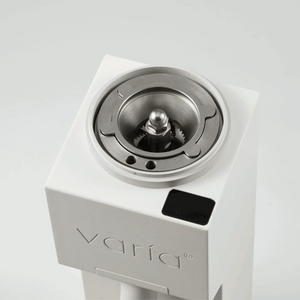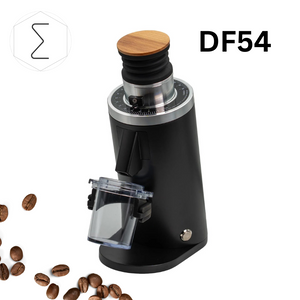If you're just starting out on your coffee journey, no doubt you will have come across blogs or videos touting the conical burr. But what about those £20 grinders you see on the high street, surely they grind beans too?
To understand the difference, we need to delve into a rough explanation of coffee extraction.
Extraction
Coffee beans contain a wide range of soluble compounds which are dissolved into solution to achieve what we call 'the brew'. The concentration of these compounds in solution results in either a 'strong' or 'weak' cup - the extraction level.
Now there are a range of factors that affect extraction, obvious ones to the scientifically-minded are temperature, agitation (if you stir a French press, more compounds are extracted) and grind size. We are going to focus on grind size in this blog.
Imagine you have a boiled sweet and you place it in a beaker of water, now imagine how long that will take to dissolve - even with agitation. Now break the boiled sweet into smaller pieces, crush it. This placed in the same solution you can imagine it would dissolve faster. This principle applies to coffee.
- Bitterness
What makes coffee bitter is largely still a hotly contested topic, but one which is well-researched. What is known is that finer grinds of coffee more easily results in bitter tasting coffee. If you grind your french press extremely fine vs a coarser (recommended) grind, then taste it for yourself - it tastes bitter.
- Acidity
Acidity in coffee is always there, or at least the compounds which result in acidic tastes are prevalent. Higher levels of acidity generally can be attributed, actually, to less bitterness.
- Balance
A balance of bitterness and acidity can accentuate aromatic notes of the coffee, whether floral, nutty, earthy.
Blade grinders
Blade grinders are essentially food processors, there is no control. The motor spins blunt blades around, smashing the coffee purely by force. What this does is explodes the beans in an uncontrollable way, resulting in a messy powder of both fine grinds and larger pieces. The grind size itself cannot be controlled and any resulting grind from it is riddled with fine powder which is sure to give any brew a bitter note which is impossible to get rid of without intervention.
Burr grinders
Burrs are a set of serrated plates, either conical or flat, and are engineered to slowly feed the beans to a very small area where the beans are processed in-turn. The gap between the burrs can be adjusted to allow for controllability of the resulting grind size. The beans are not smashed, more they are rubbed between the plates and cut by serrated edges and when the particles are small enough, the fall through the burr gap to the grind catcher. This results in an overwhelmingly more consistent grind size distribution, lowering bitterness when not required and giving you a more predictable grind size and therefore taste profile.
Blade coffee grinders have their place, but it isn't in coffee. Conical burrs increase the consistency of grind size by orders of magnitude, resulting in a less bitter and more balanced, sweeter cup.
If you are just starting out with grinding your own beans, below are a list of recommended starter grinders all available here at Sigma Coffee UK.

